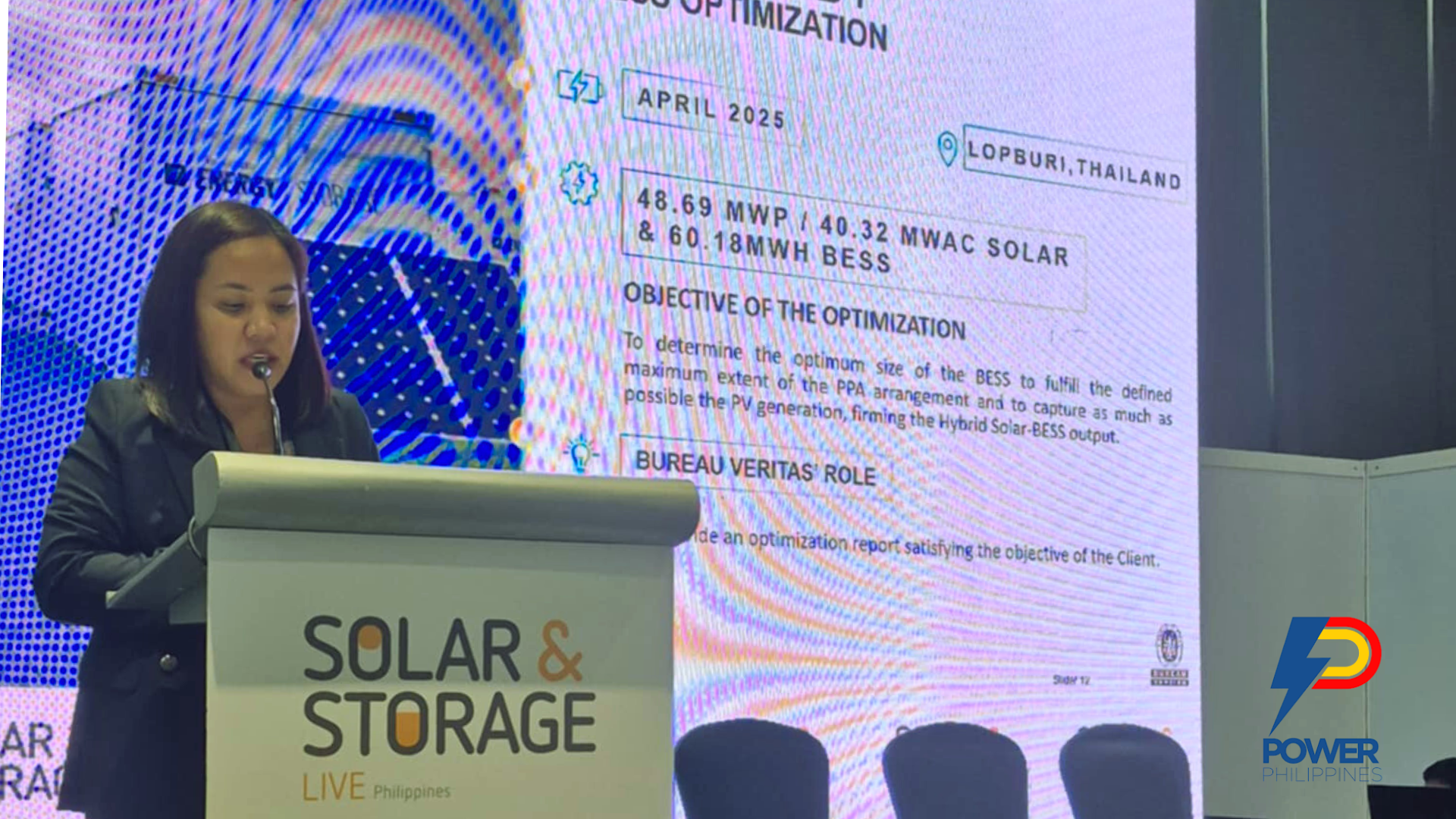Technical, Commercial Challenges Limit Solar’s Role as Baseload
- May 21, 2025
- 0

Despite technological strides, solar paired with battery storage faces key hurdles before it can replace traditional baseload—yet rapidly falling battery prices may soon tilt the balance.
While renewable energy advocates continue to champion solar and battery storage as the future of baseload power, key technical and commercial limitations still challenge their viability as a reliable 24/7 energy source. This was the assessment shared by Rieanne Velasco, Southeast Asia Technical Leader for Solar and BESS at Bureau Veritas, during her presentation at Solar & Storage Live Philippines 2025 on May 19 at the SMX Convention Center.
“Whether wind and solar PV are suitable for generating baseload is still very controversial,” Velasco said. “But when paired with a battery, potentially this concern can be addressed.”
Velasco underscored several limitations—particularly the variable nature of solar power, the shorter lifespan of PV and battery systems compared to coal or nuclear, and higher operating costs tied to maintenance and inverter-based systems. She noted that most current large-scale solar and battery setups struggle to match the firm capacity and grid-stabilizing characteristics of conventional baseload plants.
“Solar PV can only produce generation during the day, with capacity factors around 20% – 24%, versus 50% for coal and over 90% for nuclear,” she added. “Also, inverter-based plants cannot contribute to system inertia in the event of failure, which is essential for grid stability.”
Despite these challenges, the landscape is rapidly shifting—particularly in battery economics. Velasco cited a 40% drop in battery prices in 2024, driven by global oversupply in cell manufacturing, lower material costs, and the growing use of lithium iron phosphate (LFP) batteries.
“There’s a huge price decrease… due to cell manufacturing overcapacity, low component prices, and a slowdown in EV sales,” she said. “These price drops, along with improvements in manufacturing and next-gen tech like silicon and lithium metal anodes, could significantly reduce costs in the next decade.”
However, Velasco cautioned that in the Philippines, commercial and regulatory barriers remain a roadblock. The country lacks a capacity market, and current incentives are largely limited to auxiliary and reserve services—limiting the monetization potential of energy storage.
“Storing renewable energy, specifically solar, might seem like a complex process at first,” she said. “But as we gradually overcome these challenges, the long-term benefits can really make a difference for the industry and the environment.”
As the energy transition accelerates, the road to solar and batteries becoming a true baseload option is still under construction—but the sharp drop in storage costs might just help pave the way.
Follow Power Philippines on Facebook and LinkedIn or join our Viber community to stay up to date on the latest energy news.